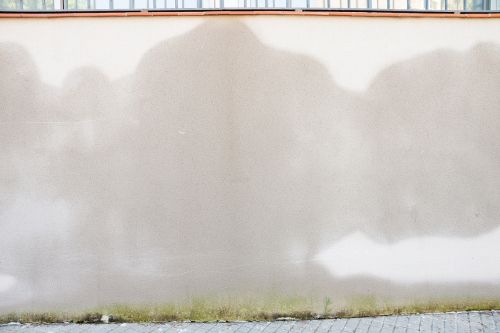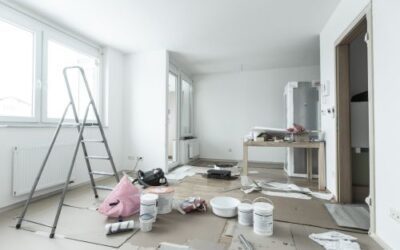Condensation
Condensation occurs when water vapor in the air comes into contact with cold surfaces, such as windows and walls, turning into liquid water. This problem is common in poorly ventilated areas, such as bathrooms and kitchens.
How to identify condensation
Signs of condensation include fogged windows, mold in corners, and a damp environment. There may also be a persistent musty smell in the affected areas.
Solutions for condensation
To combat condensation, it is essential to improve ventilation. Installing exhaust fans in bathrooms and kitchens, using dehumidifiers, and ensuring rooms are well-ventilated are crucial steps. Anti-mold paints can also be applied to prevent mold growth on affected surfaces.
Rising damp
Rising damp occurs when water rises from the ground through porous materials in the building’s structure, such as foundations and walls.
How to identify rising damp
Symptoms include damp stains at the base of walls, peeling paint, and salt deposits. This type of dampness typically ascends from the ground, primarily affecting basements and ground floors.
Solutions for rising damp
The solution to rising damp involves installing waterproof barriers in the foundations. This process can include injecting waterproofing resins or applying impermeable membranes. Additionally, improving drainage around the property is essential to prevent water accumulation near the foundations.
Preventive methods to avoid humidity
Waterproofing surfaces
Waterproofing surfaces exposed to the elements, such as roofs and exterior walls, is crucial to prevent water ingress. Using waterproof paints and sealants can provide additional protection.
Recommended waterproofing products
Various products on the market offer effective protection against humidity. High-quality waterproof paints and silicone sealants are particularly useful for areas prone to leaks.
Proper ventilation
Proper ventilation is essential to prevent condensation and maintain a dry environment in the home. High-humidity areas, such as bathrooms and kitchens, should have effective ventilation systems.
Ventilation systems
Installing exhaust fans in bathrooms and kitchens can help reduce humidity. Additionally, it is advisable to open windows regularly to allow fresh air circulation. Dehumidifiers are also useful for maintaining low humidity levels in the air.
Regular maintenance
Regular maintenance of home structures, such as roofs, walls, and drainage systems, can prevent many humidity problems before they become severe.
Inspections and repairs
Regularly inspecting the condition of the roof, walls, and drainage systems allows for the detection and repair of minor leaks before they become major issues. Additionally, keeping gutters and downspouts clean ensures proper water flow.
Professional solutions for humidity problems
Waterproofing services
Hiring professional waterproofing services can be an effective solution for severe humidity problems. These services include applying waterproof membranes and repairing damaged structures.
Bartolomé Bas Pinturas: Professional solutions
Bartolomé Bas Pinturas offers a wide range of waterproofing and humidity elimination services. They use high-quality products and advanced techniques to ensure durable and effective results.
Mold removal
Mold is not only unsightly but can also be harmful to health. It is crucial to eliminate it effectively and prevent its recurrence.
Mold removal techniques
Professional mold removal techniques include using specific chemical products and improving ventilation in affected areas. Applying anti-mold paints can also help prevent future problems.
Restoration of damaged structures
Humidity can cause significant damage to home structures. Restoring these structures is essential to maintain the building’s integrity.
Restoration process
The restoration process may include repairing damaged walls, ceilings, and foundations. It is important to use high-quality materials and appropriate techniques to ensure durable repairs.
Contact our professionals to eliminate your humidity problems.




